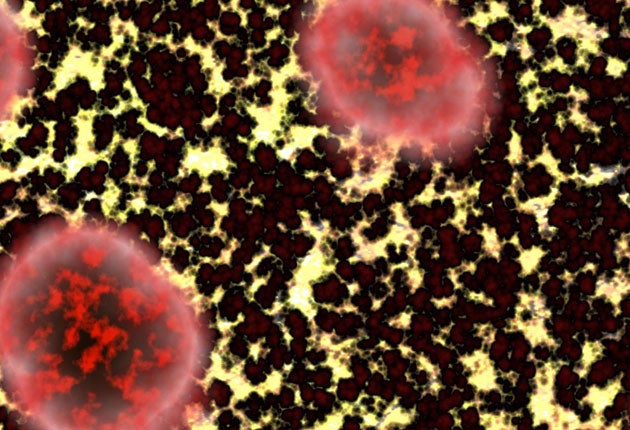800 haemophiliacs given tainted blood at risk of vCJD
Alarming warning to hundreds of sufferers who received transfusions

More than 800 people with haemophilia have received contaminated blood products putting them at heightened risk of developing vCJD, the Government has disclosed for the first time.
The figures were revealed in a parliamentary answer from Lord Darzi, a Health minister, following the death of a haemophiliac who had received infected blood products. A post-mortem examination on the man, who was in his seventies when he died last November, revealed traces of variant Creutzfeldt-Jakob disease (vCJD) in his spleen, although his death was due to an unrelated cause.
The development has increased the likelihood that haemophiliacs who received infected blood could develop the brain disease, Chris James, chief executive of the Haemophilia Society, said yesterday. The CJD Incidents Panel is to consider the implications of the finding at its meeting today.
"It now looks like there is a real possibility of a link between receiving blood products and developing vCJD. What was a theoretical risk is now a suspected causal link. That has raised the threat for other haemophiliacs who may have dismissed it," Mr James said.
The Government is due to publish its response to the Archer inquiry today, which called for higher compensation payments for haemophiliacs infected with HIV and hepatitis C through contaminated blood received in the 1970s and 1980s. The inquiry, published in February, condemned government delays in responding to the scandal which resulted in 4,670 haemophiliacs being infected with hepatitis C, of whom 1,243 were also infected with HIV. Almost 2,000 of them have died.
Now they are facing an additional threat. In a parliamentary answer to Lord Morris of Manchester, Lord Darzi said 802 haemophilia patients had received clotting factors contaminated by blood from a donor who went on to develop vCJD. A further 66 people who did not have haemophilia had received blood transfusions or blood products from donors who later developed vCJD, of whom 44 had died, three from vCJD. The remaining 22 were still living, making 824 in total at risk.
Lord Morris, who established the privately funded two-year inquiry into the haemophilia "tainted blood" scandal after the Government declined to hold one, said yesterday: "There were only 6,000 haemophiliacs and almost 2,000 died of infection with hepatitis C and HIV. Now another 800 are at risk who have had blood from donors who went on to develop vCJD. As a group they could hardly have been dealt a worse hand – they are the most stricken community in Britain. It is scandalous that the vCJD Incidents Panel has left it seven months [since the death last November] to investigate the implications."
The first warning that vCJD, the human form of mad cow disease transmitted through consumption of infected meat, might also be spread via donated blood emerged in 2004 when a man who had been a blood donor died of the disease. Health officials wrote to 4,000 haemophiliacs who received UK-sourced donated blood products between 1980 and 2001, to warn them they were theoretically at risk.
Those who received the warning were invited to write to the Department of Health to establish whether they had received blood products from one of two batches known to include donations from people who later developed vCJD. It is not known how many requested the information.
The Government has now revealed that 824 of those who were sent the original warning received the contaminated blood and are still living, of whom 802 are people with haemophilia.
Since 1995, 164 deaths have been recorded as definitely or probably caused by vCJD and four people are known to be living with the disease. The number of new cases and deaths has declined but scientists have warned there could be a second wave of cases.
Bad blood: Haemophiliac dangers
* Haemophiliacs receive regular transfusions of clotting factor concentrate. The high incidence of hepatitis after treatment with clotting factor concentrate from a large pool was first identified in 1972.
* Prior to 1985, blood was not routinely screened. It is estimated that around 10,000 haemophiliacs contracted HIV from the tainted blood supply.
* The Lindsay tribunal, set up in 1999 to investigate the infection of haemophiliacs with HIV and hepatitis C, concluded that patients were routinely given potentially dangerous blood products, after the risk of infection had been discovered.
* Earlier this year, the Archer inquiry into the contamination of haemophiliacs with HIV and hepatitis in the late 1970s and early 1980s concluded that "procrastination" had led to the loss of 2,000 lives.
Subscribe to Independent Premium to bookmark this article
Want to bookmark your favourite articles and stories to read or reference later? Start your Independent Premium subscription today.

Join our commenting forum
Join thought-provoking conversations, follow other Independent readers and see their replies